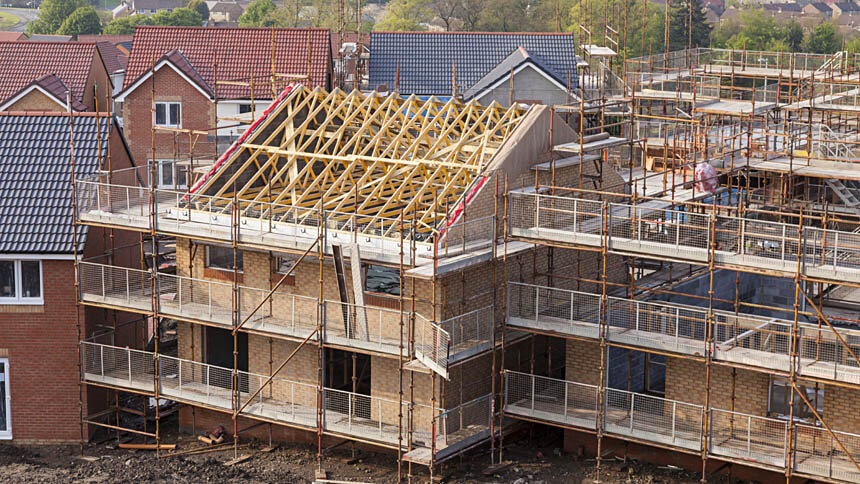A new report by Lichfields, prepared on behalf of the Home Builders Federation (HBF), questions the amount of nutrient-related pollution that Natural England estimates is generated by new housing development, and calls for local authorities to amend their nutrient calculators to ensure their projections accurately reflect local household sizes.
Nutrient neutrality is currently one of the biggest issues facing the home building industry following the ‘Dutch N’ court ruling. This prompted Natural England to revise its guidance to local authorities advising them to undertake an appropriate assessment of all applications for housing development to guard against nutrient-related pollution.
This is despite acceptance from Government that nutrients from the urban environment contribute around just 4% of the problem, with the vast majority of nutrients in the rivers coming from agriculture or failings of the water companies.

New housing schemes across large parts of 74 local authorities now having to demonstrate nutrient neutrality before building can commence or resume -the result being that an estimated 120,000 new homes are now delayed*. Natural England’s nutrient neutrality advice to local authorities includes an assumption that each new home will increase the population in the catchment by 2.4 persons.
The home building industry is keen to play their part in ensuring the environment is protected. However, analysis in this report of the initial seven catchment areas affected by the nutrients issue shows that Natural England’s default assumption significantly overestimates the likely additional population that would result from the development of new housing. The amount of mitigation required from each new development is also subsequently significantly overestimated.
The 2.4 person per dwelling assumption would indicate an annual increase in population that is over double the actual change in household population indicted by the official population and household projections – that is c.73,500 persons per annum compared to 35,250 person per annum. The critical reason for this is that calculators fail to acknowledge that most new housing caters for the existing population living in a catchment, not new people moving into the area.
The industry is keen to ensure that unnecessary barriers are not placed in the way of building new homes by demanding levels of mitigation that is not needed, especially when
new housing development has such a limited effect anyway on increasing nutrient levels with the relevant catchments, and we face an acute housing shortage that is having increasing social and economic implications.
Whilst supply has increased rapidly since 2012/13, we are still some way short of delivering the 300,000k homes a year Government estimates are needed and a growing range of constraints threaten to reverse the increases in supply – making home ownership even more of an unachievable ambition for more people.
Previous research by Lichfields on this issue demonstrates the significant economic consequences that delays to housebuilding will have on local communities, including:
- 300,000 fewer jobs
- 16.3bn less economic activity being generated
- £2.7bn less investment in affordable housing
HBF is urging local authorities to amend the nutrient calculator to take account of evidence from the official household and populations projections of the net average household size in each area, rather than default to Natural England’s advice.
HBF’s Director for Cities, James Stevens, said: “The homebuilding industry is committed to protecting the natural environment, but it is clear that the current approach does not reflect the minor contribution of housing development to the issue.
“We are urging the Government to work with us to agree a proportionate and sustainable solution to ensure housebuilding can resume in the areas concerned. Providing desperately needed new homes delivers significant social and economic benefits for new and existing communities and solutions ned to be found.”
Gareth Williams, Senior Director at Lichfields said: “The increasing number of local authorities now affected by this issue is having a major impact on delivery of new homes in England and Wales. The calculator methodology currently proposed by Natural England has two major failings: firstly: it fails to recognise that a significant proportion of these new homes are to meet the requirement of existing residents so have no impact on overall population and secondly; they then apply an average household size that over estimates future population. It is important that the issue of water quality is addressed but the response must target the primary causes and be proportionate in it is approach.”




















